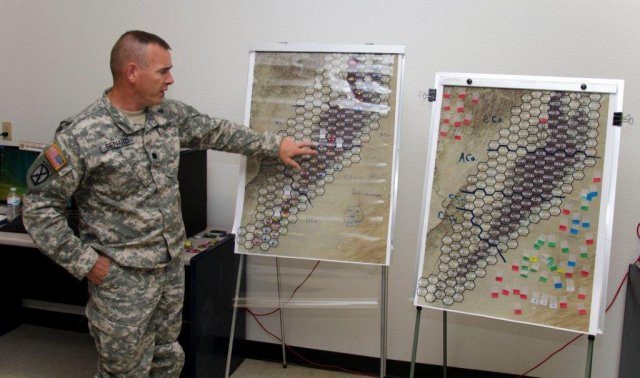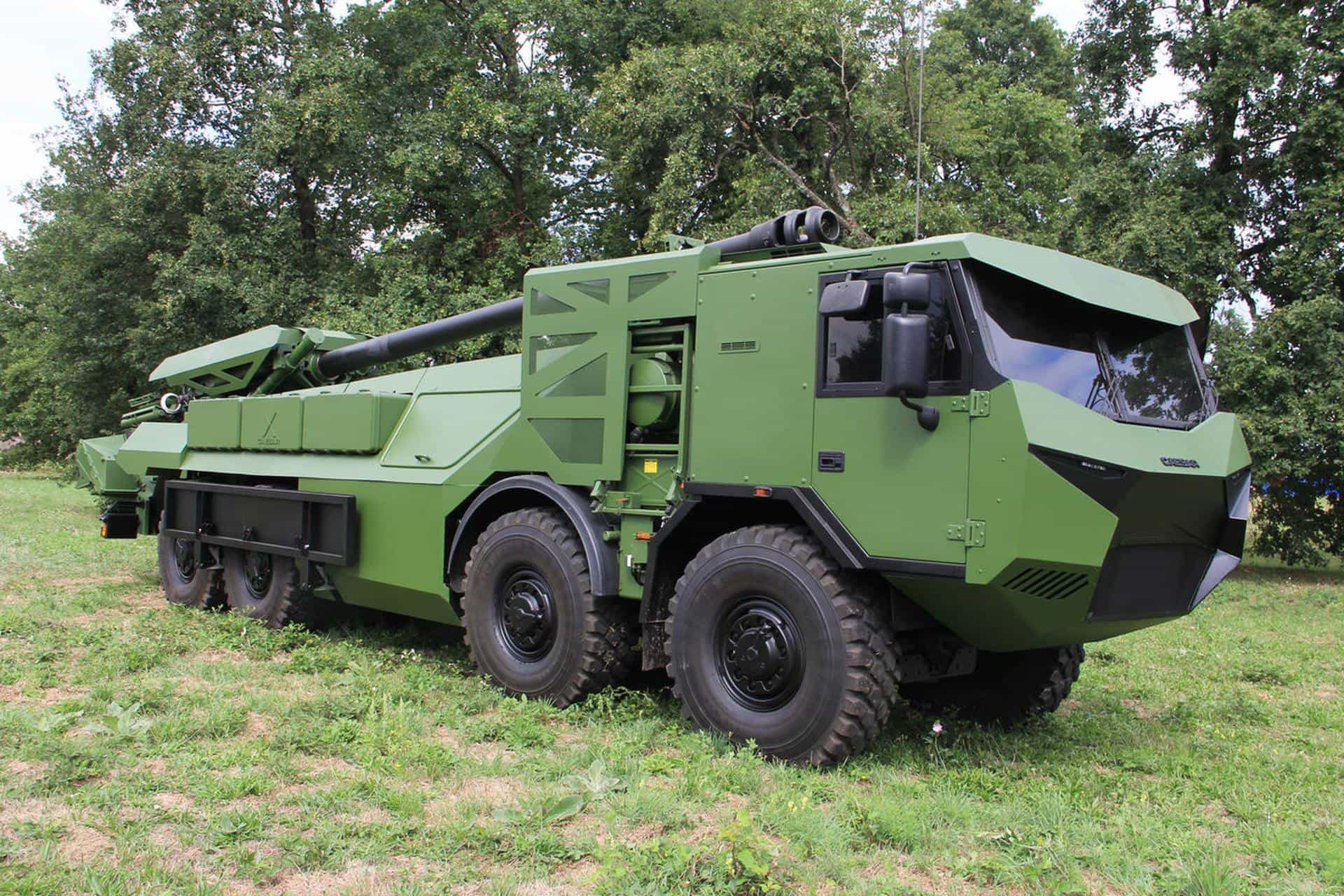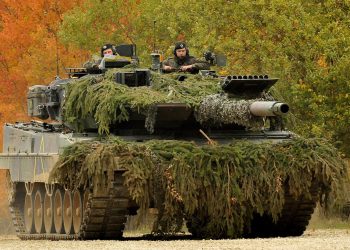Games mean serious business at the Training and Doctrine Command Analysis Center at White Sands Missile Range with the development of a new war game that will help evaluate the social impact of Army operations.
The Irregular Warfare Tactical War Game, being developed at Training and Doctrine Command Analysis Center at White Sands Missile Range, or TRAC WSMR, will be used to assess how Army tactical operations impact the population of a host country. The game system is designed to focus on the tactical level of a battalion sized unit conducting operations in an irregular war.
Keeping the game real, the players use the backdrop of Afghanistan, with maps, objectives, operations and other elements all based on information collected from real world sources. In development since 2008, the Irregular Warfare Tactical War Game has already been used by several organizations to conduct some initial exercises with testing of the fully functional prototype that was expected to be finished in November.
“The purpose of this event this October is to prove that we can produce analytic products to support a study,” said Paul Works, chief of methods and research with TRAC Headquarters at Fort Leavenworth, Kan. If all goes well, analyses using the war game are expected to begin in April.
Building the game itself required TRAC to assemble new resources that it previously didn’t have. While TRAC had the ability to create basic social interaction models for the game, the details of how those models were to interact with each other weren’t there.
“We stood up a whole new organization called the Complex Operations Data Development Activity, hired a number of social scientists, the first social scientists hired within TRAC in 20 years, and those folks are dedicated to developing what we call human social-cultural behavioral data,” Works said.
It was this data that, when applied to the game models, allows them to represent the Afghan public and generate the information about how Army operations affect them.
The game, with its large-scale simulated world and focus on the tactical unit, is currently being used to analyze if giving greater intelligence access to a company commander will help the company and battalion level units perform better and win local support faster and more effectively. To what level intelligence data needs to be disseminated has been a point of discussion across the Army because the intelligence needs of a company commander are typically specific and tactical in nature.
When going against an irregular enemy like the Taliban however, some Army leaders suspect that providing better access to more intelligence could allow the company commanders to make decisions with a more positive impact on the local population.
“We’re pulling information out of the game to determine the differences between the two cases. How do the company commanders perform, are they better at understanding (the enemy) or identifying what they are doing and then interdicting that? Then because our model is social as well, how does that impact the population? Does having this new capability and intelligence allow us to change how the population sees the world or us?” said Maj. Patrick Workman, senior military analyst with the Studies Support Directorate of TRAC WSMR.
The Army is currently evaluating other tools at WSMR intended to get more intelligence to the company commander, making TRAC’s work in the field all that more relevant to the Army’s current goals.
The game includes a massive amount of play options and features that bring into account the many various elements that would play a part in a modern conflict.
“The way the war game is set up, we have a number of cells effectively competing with each other to influence the population,” Workman said. Player groups include the typical “blue” force, the players controlling the U.S. battalion; a “red” force, with players who control Taliban forces and criminal elements like the drug trade in the game; and a “green” force, whose players control the indigenous forces like local military and police.
Filling out the game world is an “operational wrap around” group that handles larger scale portions of the game like blue force brigade level operations and Taliban regional operations.
Adding more layers to the game are models and simulations that represent other aspects of the modern battlefield.
Media reports are simulated and their affect on the population is factored in. Social media is also a factor with the simulation tracking the way that information on a social network passes to friends and family and not directly to the general public like traditional media.
A leadership simulation called “Nexus” is also included in the game. This complex simulation contains the different leadership characters that an Army leader in the field would have to interact with, both directly and indirectly, when conducting operations.
Village elders, government officials, and other important individuals can influence a population in different ways, and the factors in these differences and how they interact with each other and the player’s choices.
“It gives our players a way to interact with them, to get them to pass out messages that are supportive, or that may not be supportive if the leader doesn’t care for whoever is interacting with them,” said Workman.
Forces and personalities aren’t the only thing in the system. Essential services and infrastructure are also in play. Electricity, water, medical services, even laws and legal cues are incorporated into the game as well. These elements can play a huge role in a population’s outlook and opinions, as the availability of these services increases or decreases.
“We start our war game with services at a specific level and then players are able to interact or attack and decrease those capabilities or improve those capabilities in order to help the population get whatever it is they need,” said Workman.
Just because a player chooses to take action regarding a particular service doesn’t mean it will turn out as expected. Workman explained that, just like in the real world, in the game it’s possible that the contractor hired to improve infrastructure will take the money and run instead of doing the work.
Bringing all these complex interactions together into one comprehensible game is the Planning Adjudication and Visualization Environment. PAVE is a custom software package made specifically to handle large scale simulations like the Irregular Warfare Tactical War Game. PAVE takes all the different actions of each player and system within the game and turns them into interactions, generating and displaying the effects those actions have on the other players and systems in the game world.
“It’s the center of our models, so the players interact with it, then it reaches out to whatever model we are using to inform it and it brings the information back in to present it to the players,” Workman said.
While the current games being run use Afghanistan as the country being simulated, the game is designed to be able to import data on other regions as well, allowing the game to be used to evaluate possible operations anywhere in the world.
The Irregular Warfare Tactical War Game, though comprehensive and functional, is still a system in development with lots of improvements still in the works. At this time, sections of the game are still played out on a table top, where players draw cards and move pieces around a board.
Furthermore, the game requires a large number of people to play, with the minimum required number of players and operators topping out around 40. Eventually, TRAC plans for the entire game to run out of a computer system, and reduce the minimum number of players and operators down to eight.











